BIOL10008: Cell Signalling
1/10
Earn XP
Description and Tags
Concept 12
Name | Mastery | Learn | Test | Matching | Spaced |
|---|
No study sessions yet.
11 Terms
What are the three stages of cellular communication?
Signal reception - Signal molecule arrives at target cell and binds to receptor protein, causing the conformational shape of the protein to change and expose its active site
Signal transduction - The activated receptor then activates a signal transduction pathway (consists of a series of reactions). Signal transduction is the conversion of signals (ex: extracellular signal molecule gets converted into an intracellular signalling molecule)
The pathway triggers a cellular specific response
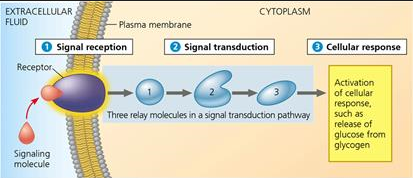
Endocrine Signalling
hormone, secreted into bloodstream to travel to distant target cells
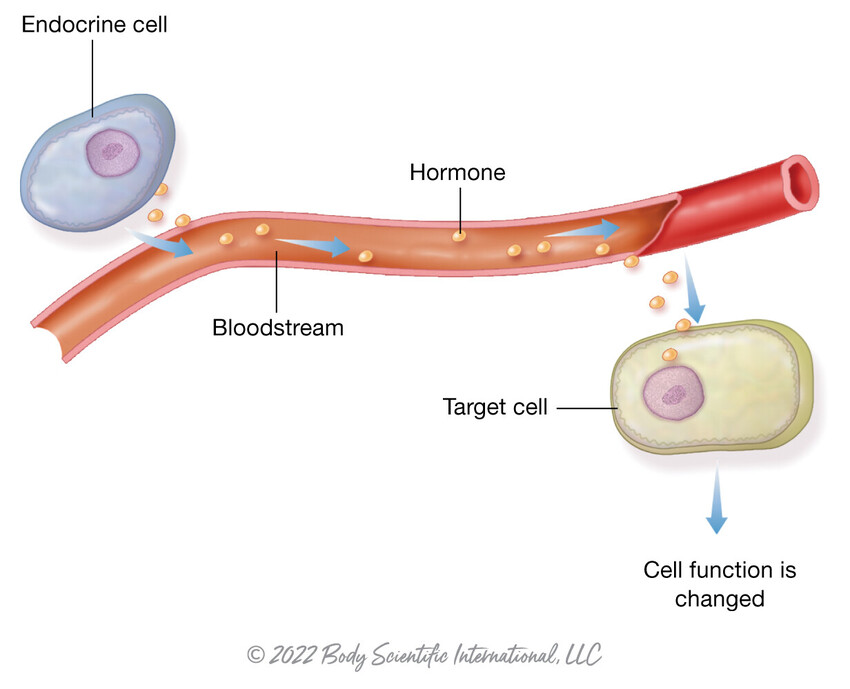
Paracrine signalling
localised signals, released into extracellular fluid to bind to nearby cells, can also go back to itself, affects neighbouring cells
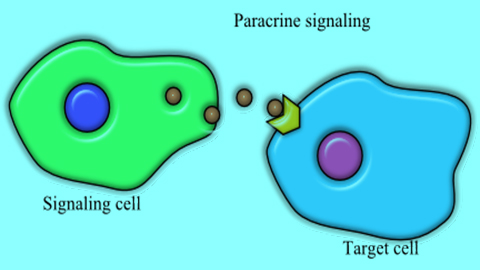
Autocrine signalling
bind to receptors on same cell that secretes them, affecting cell that secretes them
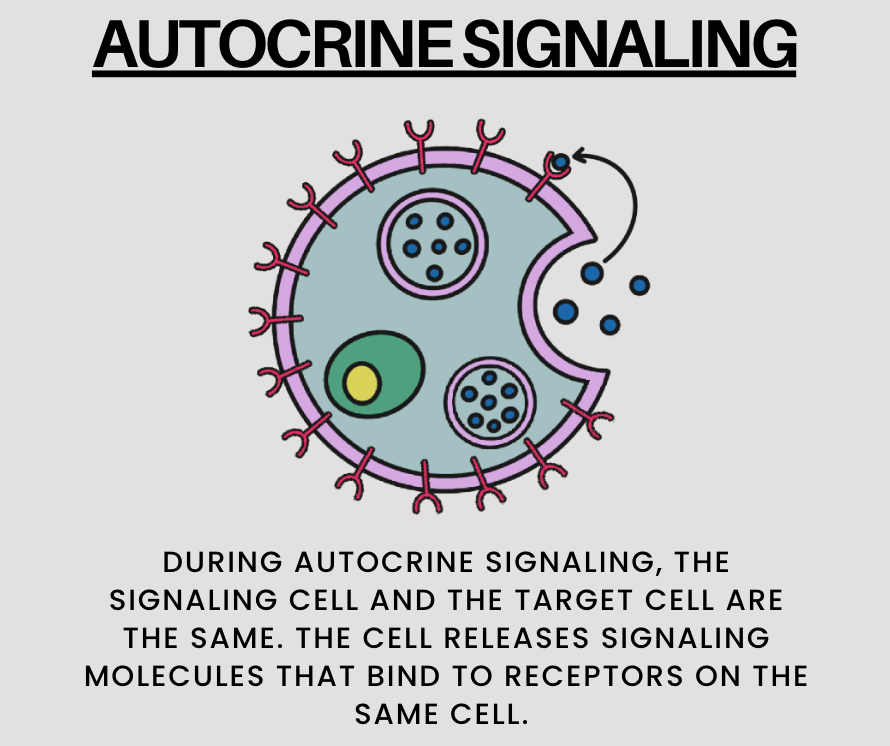
Juxtracrine signalling
bind to cell in contact with the secreting cell
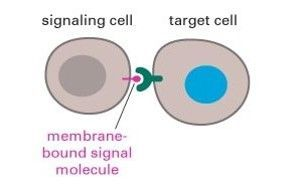
Synaptic signal
transmitted electronically along axons on neurons, release neurotransmitters to communicate signal to adjacent neurons
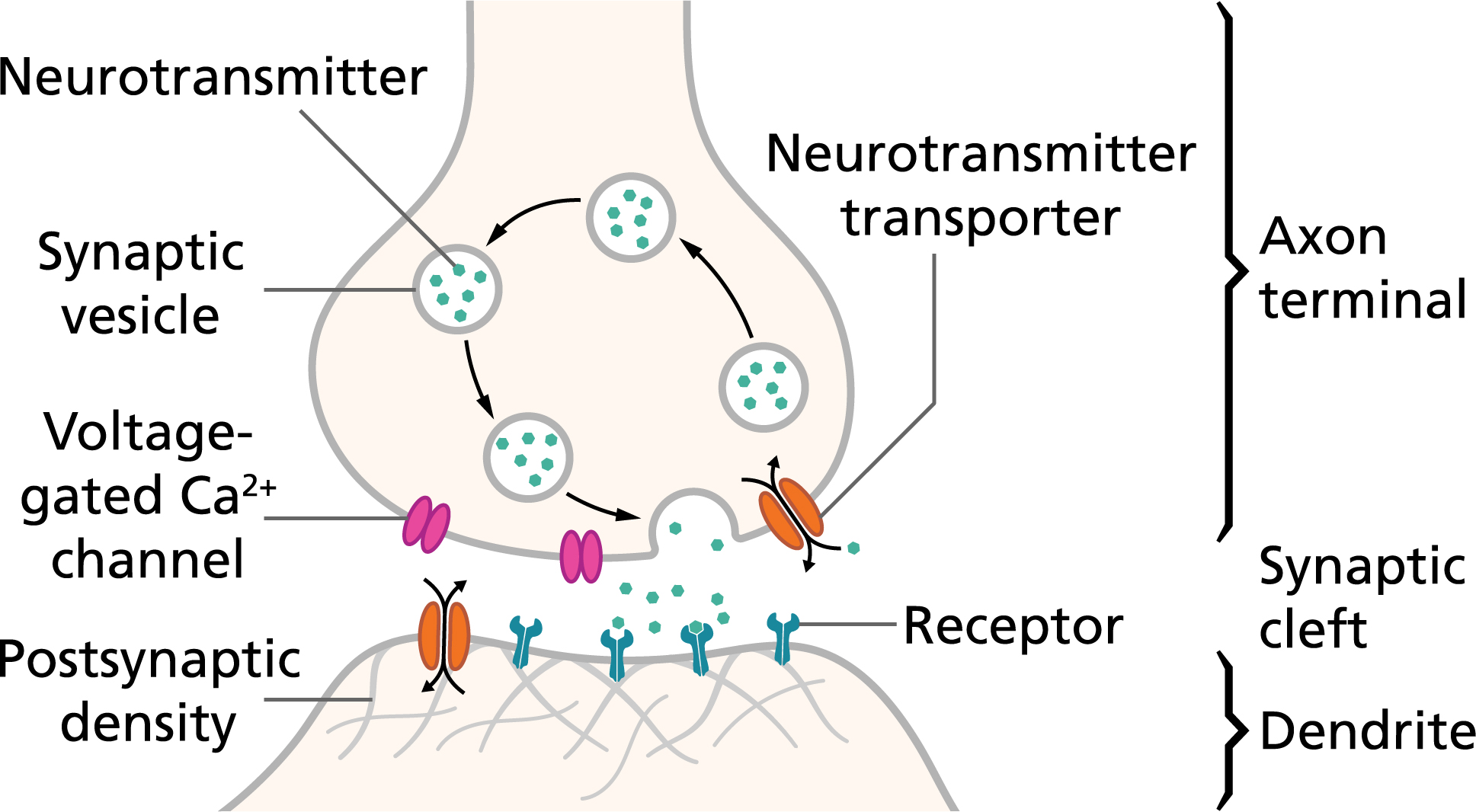
How does an intracellular receptor work?
Many intracellular receptors are transcription factors, signal can be a physical signal such as light or chemical signals that diffuse across the membrane
Signal enters cytoplasm and binds to receptor
This causes receptor to change shape and move to the nucleus where they bind to DNA and alter expression of specific genes. Ex: cortisol
How does a membrane receptor work?
Membrane-bound receptor is embedded in the cell membrane, with both extra and intracellular regions connected by a hydrophobic region
Signal received is polar and/or large, so it cannot diffuse across membrane
It fits into the receptor at the extracellular region, causing a change in tertiary shape and leading to a change in the cell
Ion channel receptor - protein kinase receptor
Signal binds to receptor and causes protein to change in shape and open
The channel is lined with negatively charged amino acids, allowing ions to flow into the cell
Ion buildup initiates events that lead to a response
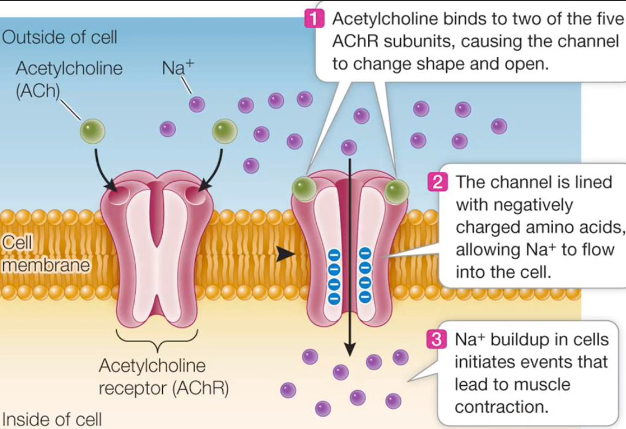
How does an enzyme coupled receptor work?
Will undergo phosphorylation of an intracellular protein, causing a signal to be expressed and a consequent cellular response to be carried out
Ex: When insulin binds to the receptor, the receptor becomes activated and is able to phosphorylate itself and insulin response substrates. These proteins then initiate cellular responses
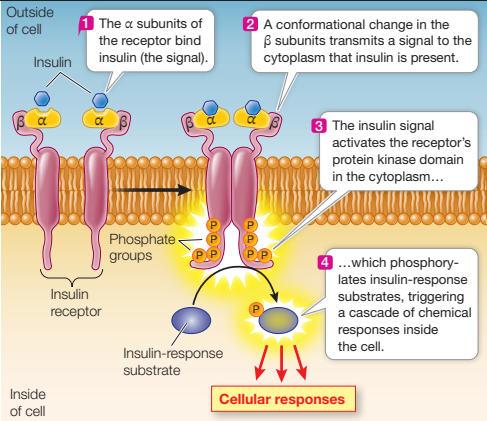
How does a G Protein Coupled Receptor (GPCR) initiate a cellular response?
G protein is an intermediate which binds to the receptor, GDP and GTP, and an effector protein
When the receptor protein is activated, G protein binds to it and causes GDP to convert to GTP
This causes a conformational change in the G protein, causing a subunit to separate
The subunit moves across until it encounters an effector protein which it can bind to, activating the effector and initiating a cellular response (can be activation of a transcription regulator which will stimulate the transcription of target genes)
GTP is hydrolysed back to GDP and the components reassemble
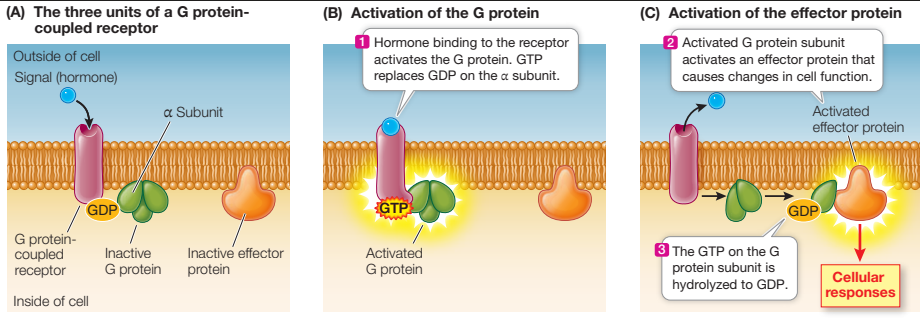
What is a signal transduction pathway?
A signal binds to a receptor, triggering a series of intracellular pathways to initiate a response to stimuli
Ex: Binding to a receptor can activate adenylyl cyclase and increase the concentration of cyclic AMP. Cyclic AMP activates protein kinase A (PKA) which moves into the nucleus and phosphorylates specific transcription regulators. These proteins then stimulate transcription of target genes.
